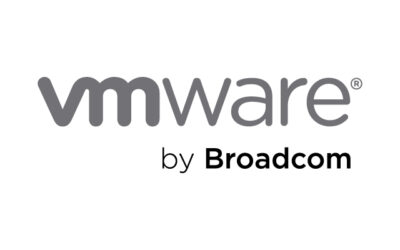Even for IT experts the future is hard to imagine, remember where technology was in the year 2000 and think about how the world could be different in 2040. But as a business leader, you need a plan for your IT infrastructure so that it can lay the pathway for future growth and, at the very least, doesn’t get in your way. Knowing when to scale up versus scaling out will help you put this plan together.
There are changes on the horizon that will require you to scale up and/or scale out your IT infrastructure. Planning ahead now will save money and frustration in the long term.
What is coming ‘round the IT mountain? (Yee-haw)
Here are a few new technologies that we know to be either already happening or on the horizon for businesses.
- 5G – The latest generation of mobile network connectivity is going to revolutionise what technology is able to do with an internet connection.
- AI and machine learning – From virtual assistants, to data analysis, to intelligent manufacturing; if you’re not using them already you soon will be.
- Cyber security risks – Not ‘new’ news, but certainly a growing problem, especially as our reliance on digital technologies increases.
- Quantum computing – Harder, better, stronger, faster…At some point quantum computing will go mainstream.
- The supremacy of the cloud – More workloads will be carried out online than ever before, though whether you manage that through public, private or hybrid cloud is another matter.
Making the most of new technologies will enable your business to thrive in an increasingly competitive landscape and failing to keep up with competitors’ technology could be the end of your business. But you can only use these technologies if your IT infrastructure has the capacity to keep up.
What happens when you outgrow your tech
When it comes to a growth plan, there are three ways to look at capacity changes that could help you decide on your next step.
- Volume – the amount of data you are handling
- Concurrency – the number of users acting in parallel
- Interaction – the number of exchanges with the server
How do you see your organisation developing?
Do you anticipate growth in the amount of data you are handling?
Do you foresee an increase in user numbers, whether employees,customers or both?
An increase in users would also predict an increase in interactions, though the nature of these will vary.
Figuring out the kind of growth you are expecting enables you to consider how best to scale up – or scale out – your IT infrastructure and whether you can do that on-prem, or whether you need to move to a data centre and/or the cloud.
How to scale up/out your IT infrastructure
Scaling up – sometimes called vertical scaling, is the act of improving and upgrading existing hardware.
This might be by replacing outdated tech with new servers, adding RAM, upgrading the discs or adding processors to existing servers. Scaling up allows you to do more within the blueprint of your existing server structure (and potentially in the same server room) and is a fairly quick and easy fix when you are running out of capacity. However, scaling up offers limited growth potential as individual servers can only be upgraded to a finite point. It’s a short-term fix.
Scaling out – or horizontal scaling, is where you add additional servers, or nodes, to your IT infrastructure.
When scaling out you either have to network the nodes together into clusters, or use specific servers for specific workloads and hope that everyone knows what is stored where. Adding more servers increases the footprint of your infrastructure, at which point you may need to move to a data centre. Scaling out is a better long-term growth option – and something you will have to do at some point if you continue to grow – but is also more complicated to manage. The more nodes you add, the more points of failure you introduce, both on the technical and security side. Expertise is required to manage the network and ensure the different nodes are communicating as they should, a data centre can also help advise on this.
Grow in haste, repent at leisure
At the time of writing, many businesses are frantically trying to upgrade their IT infrastructure to cope with mass remote working brought about by the COVID-19 pandemic. As a result, it is likely some will fall into the following traps:
- Adding an un-networked server without clear instructions, leading to user confusion
- Installing insufficient extra capacity, which reduces the efficiency of the upgrade
- Lack of preparation and testing prior to deploying new tech, which is then more likely to fail
- Insufficient and patchy connections between incompatible systems
- More servers without appropriate environmental controls leads to servers overheating in on-premises comms rooms.
Scaling up or out without a strategy could leave you with a struggling system and less budget. Plan ahead and seek out help if you need it – we’re always happy to talk through your options.
How a data centre can help
Trying to expand your IT infrastructure and keep it on-prem – particularly when no one else is on the premises – is a big ask. The more infrastructure you have, the stronger the argument for housing it in a purpose-built data centre where the temperature is properly controlled, reliability is good, security is tight and there is always someone there to check on things for you (even during lockdown).
The other advantage is the availability of expertise to help you navigate these kinds of decisions about when and how to expand your IT infrastructure. Having worked with many different types and sizes of companies, data centres have the experience to advise on scale up/out options and are on hand to ensure everything goes smoothly.
Your data centre options – cloud or colocation
With many data centres offering private cloud facilities as well as colocation, you can even hand over all responsibility for server structure, since a private cloud provider takes care of the physical hardware on your behalf. This makes future scaling even easier since you don’t need to purchase new hardware, just get a larger cloud provision form your supplier.
If you prefer or need to manage your own servers, hosting them in a data centre, where the racks and environmental controls are already in place, is still far easier than doing it on-premises. As well as a lot of the infrastructure already being in place, you get digital experts to guide you on your way, and help maintain your system.
Whichever option you decide is best, you’ll need an expertly managed data centre to host your systems in. If you have questions about how a data centre could work for you, get in touch with one of our experts who can learn about your requirements and provide bespoke advice on the ideal solution.



